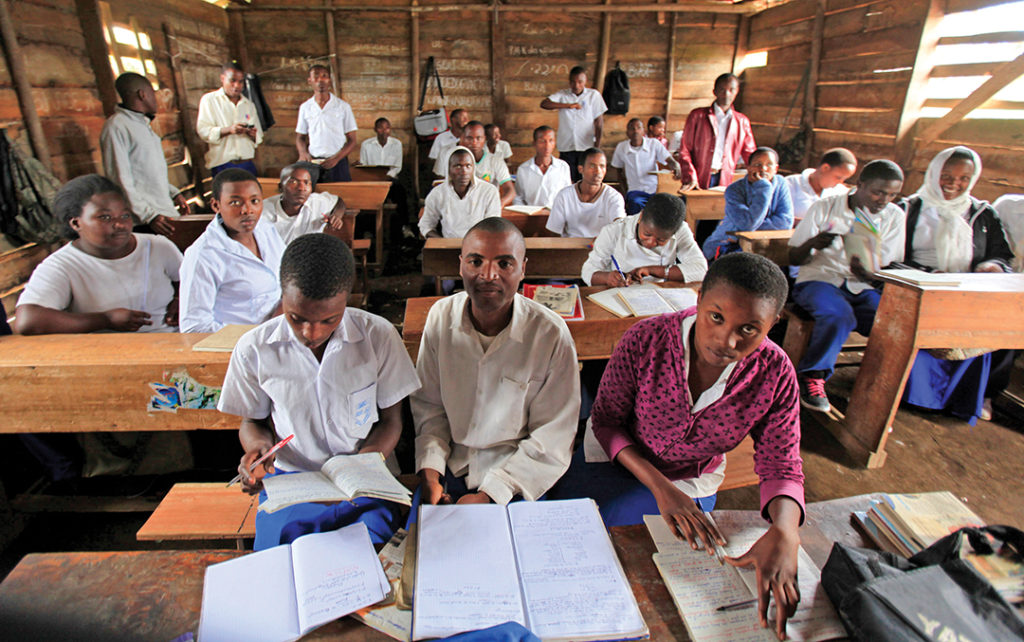AGENCE FRANCE-PRESSE
“I haven’t once spoken my mother tongue Kilokele in the 62 years I’ve lived in Kinshasa,” says Charles Tongohala. “None of my nine children speak it.”
Tongohala’s native tongue is one of 450 spoken in the Democratic Republic of the Congo, the sprawling nation of 71 million people whose languages — almost all of them spoken, not written — account for 9 percent of the world’s 5,000 languages.
He was a boy when he moved to the capital from a northeastern village that is home to the Lokele fisher people, who live along the banks of the giant Congo River and speak Kilokele.
These days in Kinshasa, a teeming city of 10 million, people generally speak French or Lingala. When the former Belgian colony became independent in 1960, authorities chose French as the official language, though even today not all of the population understands it.
Later on, during an official “return to authenticity,” the authorities promoted the use of four “national” languages for primary schooling — Lingala (a language used by the Army and in Kinshasa and the northwest), Kikongo (west), Tshiluba (center) and Swahili (east).
Those languages are also used in regional courts and alongside French in some media.
But Lingala and Swahili, which are also spoken in neighboring countries, are far more widely used today than the other two.
In 2000, French linguist Claude Hagege warned in a book that pushing regional languages, such as Swahili, over lesser-known tongues could wind up killing minor indigenous languages. Upwardly mobile people often will teach their children only French — or French and English.
The death of a language “is due to the rural exodus and the demographic, economic and cultural weight” of its speakers, said linguist Kadima Nzuji of Brazzaville’s Marien Ngouabi University. So although there are relatively few speakers of Kinande and Kitetela, both have a good chance of survival because they are spoken by a dynamic trading community, he said.
Kambayi Bwatshia, who lectures in history at Kinshasa’s UPN University, said “old people speak in the language of the village to survive” while young people, “especially in big urban centers, adapt to their environment.”
Hailing the work of the Christian missionaries who chronicled local languages from the 19th century on, both academics said the documents they penned soon will be all that remain of dying minority tongues.

